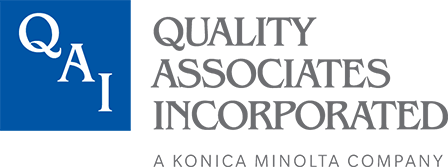Quality assurance in document scanning isn’t just important – it’s essential. A comprehensive quality management system can make the difference between a successful digitization project and an expensive mistake.
Let’s start with a scenario that probably sounds familiar: Your organization has finally decided to tackle that mountain of paper documents sitting in storage rooms and filing cabinets. You’ve made the wise decision to hire professional paperwork scanning services, and you’re excited about the prospect of going digital. But here’s the thing that keeps many executives up at night: How do you know the scanning will be done right?
If you’ve ever dealt with a scanning project gone wrong, you understand the nightmare. Your employees encounter unreadable, blurry images, missing pages that nobody noticed until months later, or documents that are upside down and backwards. When you’re dealing with critical business information, medical records, or legally significant documents, these aren’t just minor inconveniences – they’re potential disasters that can expose your organization to compliance violations, legal liability, and operational chaos.
The Foundation of Digital Transformation Success
When most people think about document scanning, they focus on the technology, such as the scanners, the software, and the storage systems. But experienced professionals know that technology is only part of the equation. The real magic happens when you combine that technology with a robust digital quality assurance framework that ensures every single document meets your organization’s standards.
Think about it this way: you wouldn’t accept sloppy work from your accounting department or tolerate errors in your customer service operations. So why would you accept anything less than perfection when it comes to digitizing your critical business documents? Professional paperwork scanning services understand this, which is why the best providers invest heavily in comprehensive quality control systems that monitor every aspect of the scanning process.
A well-designed quality management program doesn’t just catch errors after they happen – it prevents them from occurring in the first place. Innovative organizations implement systematic checks at every stage of the process, from document preparation and scanning to image enhancement and final delivery. When you’re dealing with permanent records that must meet federal digitization standards or sensitive information that requires specific compliance protocols, this level of oversight is mandatory.
What Quality Assurance Looks Like in Practice
Here’s where things get interesting. Effective digital quality assurance extends far beyond having someone glance at scanned images to ensure that they appear satisfactory. Modern quality control systems incorporate multiple layers of validation, automated checking tools, and statistical sampling methods that provide consistent results across massive document volumes.
For example, professional scanning operations typically implement what’s called a “three-point quality check” system. Before scanning begins, operators inspect documents for condition issues that might affect image quality. During the scanning process, operators monitor equipment performance and image parameters in real-time. After scanning is complete, quality control specialists ensure that requirements are met by reviewing samples from each batch.
However, many organizations overlook the fact that they must tailor their quality management system to their specific requirements. Healthcare organizations managing patient records have distinct quality requirements compared to government agencies handling permanent records for NARA transfer. Financial institutions handling compliance documentation require different validation protocols than educational institutions digitizing historical archives.
Effective paperwork scanning services don’t use a one-size-fits-all approach. Instead, they work with clients to develop customized quality management programs that address specific regulatory requirements, technical standards, and business objectives. When dealing with FADGI compliance for federal records or Section 508 accessibility requirements, generic quality control is insufficient.
The Technology Behind Quality Excellence
Modern digital quality assurance leverages sophisticated tools. Image analysis software can automatically detect issues such as skewed pages, missing content, or inadequate resolution. Optical character recognition systems can accurately and completely capture text. Automated validation tools can verify metadata consistency and ensure that file naming conventions are adhered to correctly.
But here’s the critical point: Technology alone isn’t enough. The most advanced quality control systems in the world are only as effective as the people who operate them and the processes that govern their use. Successful quality management programs combine cutting-edge technology with comprehensive training, detailed standard operating procedures, and continuous monitoring protocols.
Professional scanning operations also understand that quality assurance is about exceeding client expectations and delivering results that enable long-term success. Documents scanned with proper quality controls in place become valuable digital assets that can support business operations, regulatory compliance, and strategic initiatives for decades to come.
The bottom line? Quality assurance is the foundation that determines whether your digitization project will be a strategic success or an expensive disappointment. When you invest in professional scanning services that prioritize quality management, you’re not just converting paper to digital files, you’re also building the information infrastructure that will support your organization’s future growth and success.
[Written by a human in collaboration with Claude.AI]


